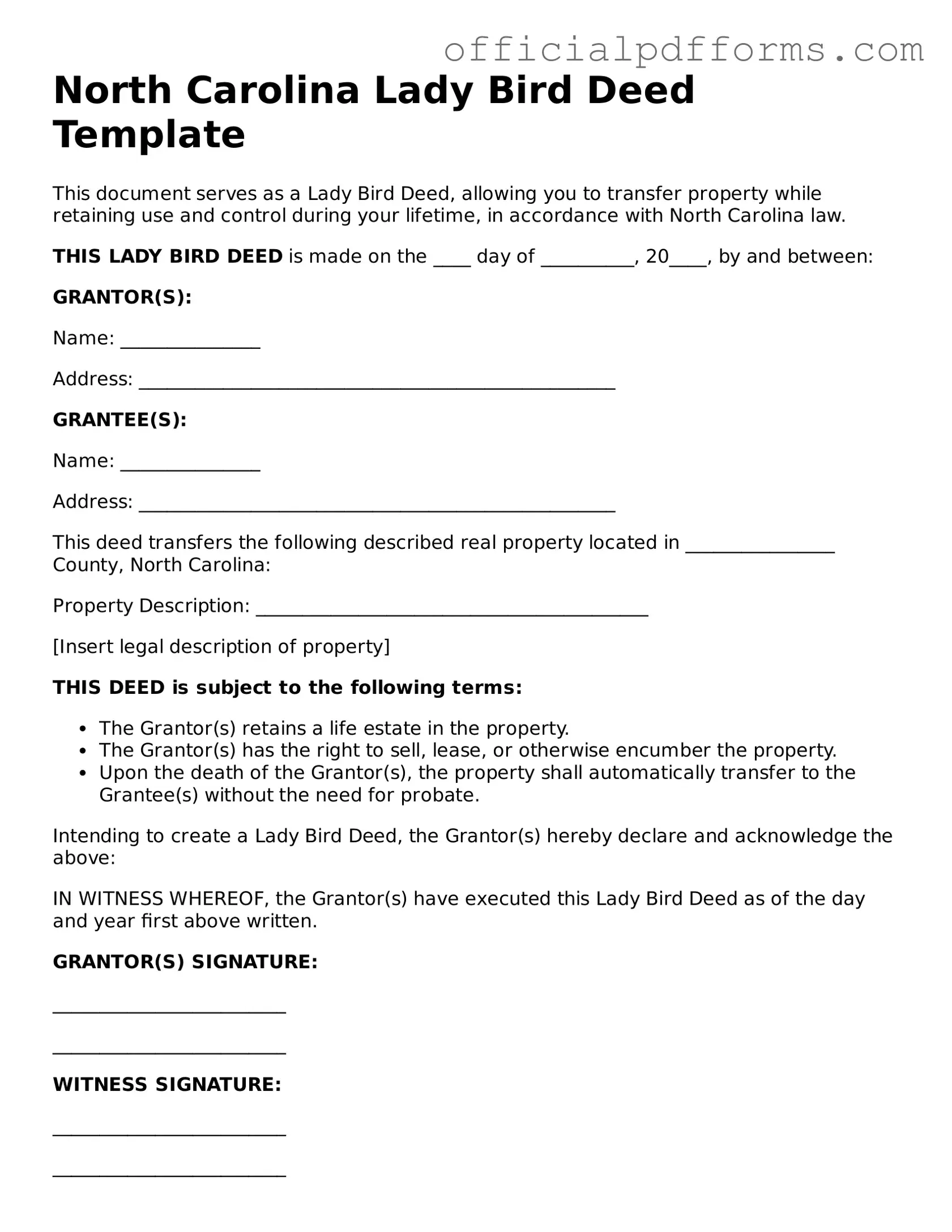Printable North Carolina Lady Bird Deed Template
The North Carolina Lady Bird Deed is a legal document that allows property owners to transfer their real estate to beneficiaries while retaining control during their lifetime. This form provides a way to avoid probate, ensuring a smooth transition of property upon the owner's passing. For those interested in securing their estate, consider filling out the form by clicking the button below.
Access Form Online
